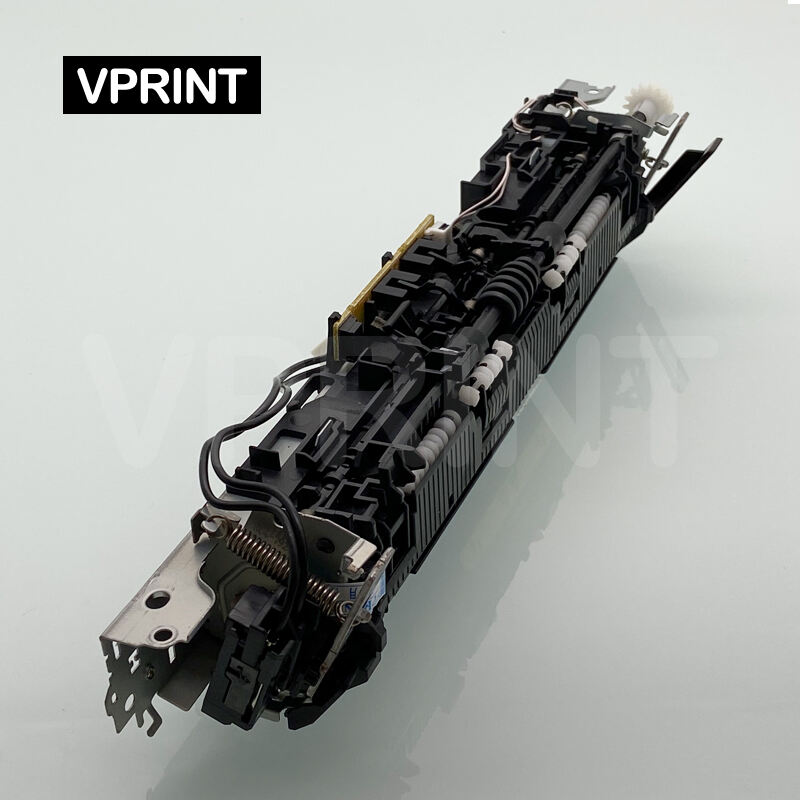Understanding HP Printer Fuser Components and Issues
The fuser assembly is a critical component in HP printers, responsible for permanently bonding toner to paper through heat and pressure. When fuser problems arise, they can significantly impact print quality and printer functionality. Understanding these issues and their solutions is essential for maintaining optimal printer performance and avoiding costly repairs or replacements.
Common HP Fuser Failure Symptoms
Visual Print Quality Issues
When HP fuser problems occur, they often manifest through distinct print quality issues. Loose toner that smears or falls off the page is a classic sign of fuser malfunction. Users might notice that printed text appears dull or that images lack proper definition. In some cases, the toner may not adhere to the paper at all, resulting in completely blank pages despite the printer seemingly functioning normally.
Another common visual indicator is the appearance of glossy streaks or spots on printed pages. This happens when the fuser's heat distribution becomes uneven, causing toner to melt inconsistently across the page. These imperfections can be particularly noticeable on documents with large blocks of color or high-resolution images.
Mechanical Warning Signs
Physical symptoms of HP fuser problems often include unusual noises during printing operations. A grinding or squeaking sound typically indicates worn fuser rollers or bearings. Some users report hearing clicking or popping sounds, which could signal that the fuser assembly is struggling to maintain proper temperature control.
Paper jams occurring near the fuser area are another reliable indicator of fuser issues. When the fuser fails to grip or release paper properly, it can cause wrinkles, creases, or complete paper jams. Regular paper jams in this area should never be ignored as they could indicate a deteriorating fuser unit.
Technical Solutions for Fuser Malfunctions
Temperature Control Troubleshooting
Many HP fuser problems stem from temperature regulation issues. The fuser must maintain specific heat levels to properly melt toner onto paper. When temperature sensors malfunction, print quality suffers. The first step in addressing these issues is checking the printer's internal temperature readings through the control panel or diagnostic tools.
Professional technicians can verify proper thermistor function and heating element performance using specialized equipment. Sometimes, simply cleaning the temperature sensors can resolve erratic heating patterns. In more serious cases, the entire thermistor assembly may need replacement to restore proper temperature control.
Mechanical Component Repairs
Physical wear on fuser components requires different intervention strategies. Roller replacement is one of the most common repairs, as these components naturally wear down over time. Pressure springs and release mechanisms may also require adjustment or replacement to maintain proper paper handling.
When addressing mechanical HP fuser problems, it's crucial to inspect the entire paper path for signs of wear or damage. Sometimes, issues that appear to be fuser-related actually stem from problems in adjacent components. Comprehensive diagnosis ensures that all related parts are functioning correctly before focusing on fuser repairs.
Preventive Maintenance Strategies
Regular Cleaning Protocols
Implementing proper cleaning procedures can significantly reduce HP fuser problems. Regular removal of paper dust and toner debris prevents accumulation that can affect fuser performance. Using approved cleaning materials and following manufacturer guidelines is essential to avoid damaging sensitive components.
Professional cleaning should be scheduled based on printer usage patterns. High-volume printing environments may require monthly cleaning, while lower-volume users might maintain quarterly schedules. Consistent cleaning helps identify potential issues before they develop into serious problems.
Environmental Considerations
Operating environment plays a crucial role in fuser longevity. Maintaining appropriate humidity levels helps prevent paper-related issues that can stress the fuser assembly. Temperature control in the printer area also affects fuser performance, as extreme ambient temperatures can interfere with proper fuser operation.
Proper paper storage and handling procedures contribute to fuser health. Using appropriate paper types and ensuring paper is acclimated to room temperature before use can prevent many common HP fuser problems. Regular paper path maintenance reduces stress on fuser components during operation.
Professional Repair Considerations
Diagnostic Approaches
Professional technicians employ systematic diagnostic procedures to identify specific HP fuser problems. This includes analyzing error codes, performing print quality tests, and conducting mechanical inspections. Advanced diagnostic tools can pinpoint issues that might not be apparent through basic troubleshooting.
Documentation of symptoms and maintenance history helps technicians identify patterns that might indicate underlying issues. This information guides repair decisions and helps prevent recurring problems through appropriate preventive measures.

Repair vs. Replacement Analysis
Determining whether to repair or replace a faulty fuser requires careful consideration of multiple factors. Age of the printer, cost of replacement parts, and overall printer condition all influence this decision. In some cases, investing in a new fuser assembly proves more cost-effective than repeated repairs.
Professional technicians can provide detailed cost-benefit analyses to help users make informed decisions. This includes evaluating printer lifecycle expectations and comparing repair costs against potential replacement scenarios.
Frequently Asked Questions
How long does a typical HP printer fuser last?
A typical HP printer fuser assembly can last between 100,000 to 200,000 pages, depending on usage patterns, maintenance practices, and environmental conditions. Regular maintenance and proper usage can significantly extend fuser life.
Can I replace an HP fuser myself?
While some experienced users may be able to replace a fuser assembly, it's generally recommended to have professional technicians perform this task. The process requires careful handling of sensitive components and proper calibration after installation.
What causes premature fuser failure?
Common causes of premature fuser failure include using incorrect paper types, poor environmental conditions, lack of regular maintenance, and excessive printing volume beyond the unit's rated capacity. Addressing these factors can help prevent early fuser deterioration.
How can I tell if my printer's fuser needs replacement?
Key indicators include consistent paper jams, wrinkled output, toner not properly fusing to paper, unusual noises during printing, and repeated error messages related to fuser temperature or operation. Professional diagnosis can confirm whether replacement is necessary.

